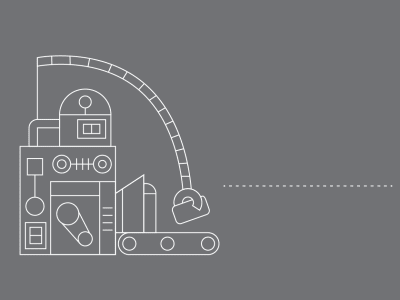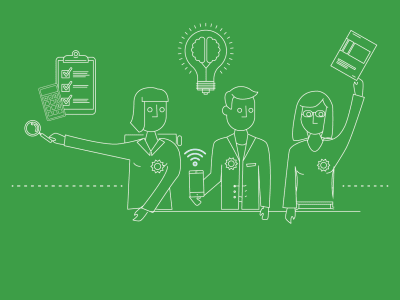What changes?

What we see
The perspective and the room setup change — including our focus: you can no longer observe a whole room of participants and assess at which table you are needed next. You can observe less body language altogether, and you can observe only one person at a time; your peripheral view becomes obsolete. You will need a co-facilitator, even for a smaller group, to pay attention to reactions and non-verbal cues. Now, factor in the medium as well: being in front of your computer means being connected to email, social media, and all sorts of notifications that affect attention and focus. It can be easy and fun to separate participants from their gadgets in a traditional session, but it is impossible to do so in a remote session.
What we feel
How we interact, experience, and perceive emotions changes. Because we can only see one person at a time, we might register less emotional cues — it might help to encourage participants to share their emotions during the session (i.e. if they are not comfortable with something). Technology can act as an additional individual stressor, if we have trouble navigating, or if it disturbs our flow; be mindful of this aspect when you manage expectations. On the positive side, the participants join the session from their home, or from their offices, and this makes the environment a familiar, comfortable, and safe space.
What we say
Our conversations and our non-verbal cues change. An online conversation requires a certain pace (it takes longer for participants to explain what they mean), and more patience (it takes time before it's someone's turn to speak). As a facilitator, you have to make sure everyone gets to speak when they want to, but you also have to make sure that people take turns. Signs and platform functionalities might help (i.e., participants can raise a hand on Zoom, they can say a certain word when they're done talking). Short and simple answers can also become signs — a thumbs up from everyone when they agree will save time).
What we do
Both our actions and our tools change. You can no longer move your group from one physical room (or section of the room) to another — your participants are stuck in the same spot (on a chair, in front of their computer). Changing their perspective in order to catalyze divergence will require more effort; and certain exercises and energizers might not work at all in this new context (e.g., you cannot pass sheets of paper to the right, and you cannot energize people by asking them to get up and place their stickies on a board).
What stays the same?
The creative process.
| Although you might use different means to go through them, the stages and the meta stage of the process remain the same. So does the type of thinking you need your participants to employ in different stages.
|
The creative heartbeat.
| The deliberate separation between divergent thinking (the generation of many questions, ideas, and solutions) and convergent thinking (the debate, evaluation, and selection of questions, ideas, or solutions).
|
The scope of facilitation.
| Whether you deliver the session online or offline, its main goal is to solve a client's challenge by tapping into the group creativity of the participants.
|
| The roles of the participants. | Your group will include a Facilitator (the guardian of the process, a Client (the guardian of the content), a Resource Group (more brainpower to engage in the content), and a Co-facilitator (who acts as the facilitator's right hand, but who is also part of the resource group sometimes). |





